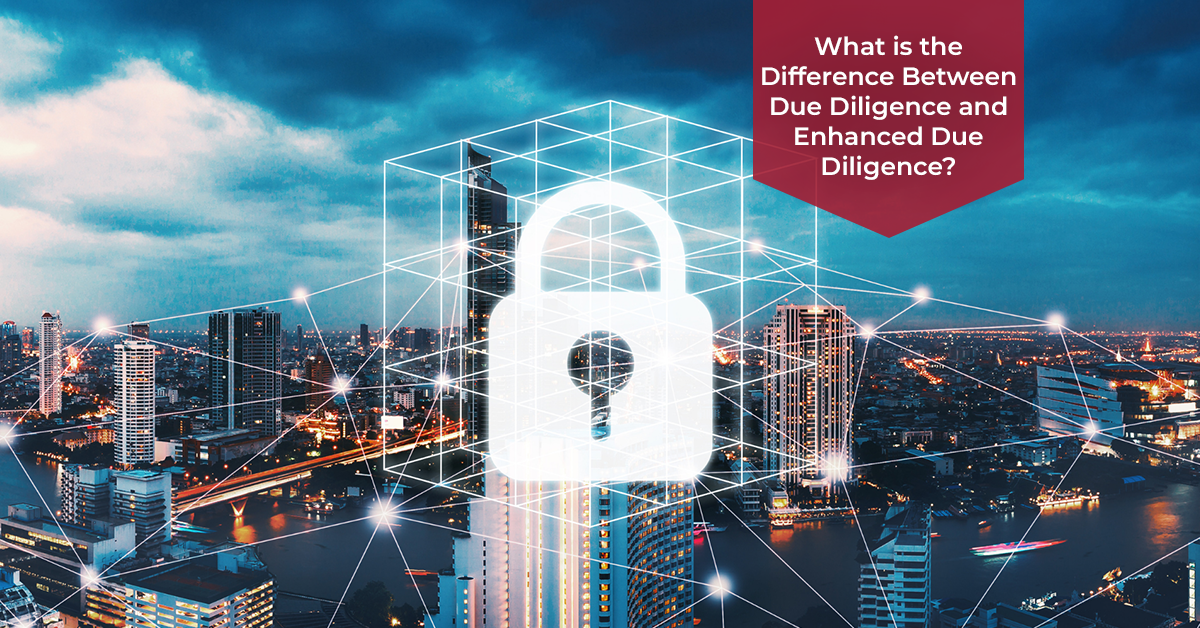
What is the Difference Between Due Diligence and Enhanced Due Diligence?
Within the intricate domain of regulatory conformity, enterprises adhere to two fundamental processes – Customer Due Diligence (CDD) and Enhanced Due Diligence (EDD) – to assess and alleviate risks associated with their clientele. While CDD involves standard information gathering to evaluate business relationships, EDD is invoked for customers identified as carrying elevated risks. In this exploration, we will explore the details of EDD examinations, illuminating their significance within the broader framework of KYC and AML compliance. Keep tuned to uncover the complexities that distinguish these essential components, vital for businesses navigating the regulatory landscape.
What is Customer Due Diligence (CDD)?
Within the structure of KYC protocols, CDD plays a pivotal role, focusing on the assessment of risks in financial transactions. It encompasses the acquisition of specific information like name, birthdate, and home address to build a thorough understanding of the customer. Standard CDD protocols encompass the identification and authentication of clients, grasping the intent behind customer relationships for the establishment of risk profiles, and the continual monitoring of potential suspicious activities.
This meticulous approach gains heightened significance during transactions of elevated risk, where substantial monetary sums or links to other entities, businesses, or locations with increased risk are involved.
The imperative for businesses to refine their CDD protocols is underscored by divergences in regulations across jurisdictions. Adherence to specific requirements of the operational jurisdiction becomes imperative for compliance. This guarantees that businesses conform to local regulatory benchmarks, underscoring the necessity of customizing CDD procedures accordingly.
What is Enhanced Due Diligence (EDD)?
Enhanced Due Diligence (EDD) is a critical business protocol employed when identifying individuals or transactions carrying a heightened risk of involvement in money laundering or other financial crimes. This involves a comprehensive set of steps, surpassing the initial due diligence process. The strategy embraces a risk-based approach to identify customers or users in need of deeper scrutiny. This involves collecting additional documentation and conducting more thorough Know Your Customer and Anti-Money Laundering checks to authenticate identities and activities. Following this, businesses decide on the subsequent steps to safeguard assets from unauthorized transactions and various types of fraudulent activities.
EDD is specifically implemented when more extensive identity verification is required for individuals or transactions identified as posing a higher risk. This may involve collecting additional documents or implementing other measures based on the specific circumstances at hand. The goal is to establish a robust defense against potential financial crimes and ensure the integrity of business operations remains intact.
What Make Customers High Risk?
Customer risk assessment involves factors like profession, location, and political exposure. A rating system is used to evaluate money laundering risk, incorporating data collection and analysis. A low-risk rating indicates a lesser likelihood of money laundering, while a high-risk rating suggests a heightened probability of fraud. Enhanced due diligence is triggered for high-risk customers, including those on sanctions lists, residents in high-risk regions, politically exposed persons (PEPs), individuals with substantial wealth or high-profile status, those in risky industries, and those linked to previous financial crimes or adverse media coverage. Understanding these indicators is vital for implementing measures like Enhanced Due Diligence.

